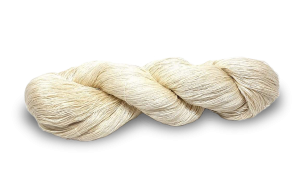RAMIE'

Ramié is a textile fiber of the vegetable grown especially in China and India.
It is white, fine and shiny and therefore very similar to silk, so much so that it is defined as vegetable silk. It is extracted directly from the stem of two types of plants: Boehmeria Nivea and Boehmeria Tenacissima.
Obtaining the fiber is quite expensive because the branches of the plant are so large that they do not allow maceration. Consequently, the first processing step is that of decortication. At the end of this procedure, the raw ramie is obtained.
Once the raw material has been obtained, a further step must be carried out to make the fiber workable. To separate the Liberian vessels (the layers of wood where the sap and mineral salts pass), the fiber is subjected to a chemical treatment, a caustic soda bath that lasts at least 24 hours (today many certified companies use a mechanical process instead of the chemical one).
After this treatment, the fibers are placed in neutralizing baths, after which they are rinsed, oiled and dried.
The advantages of Ramié are: it resists the attack of worms, bacteria and molds, it is extremely absorbent, easy to stain, resistant to very high temperatures, it does not shrink and it is easy to whiten.
